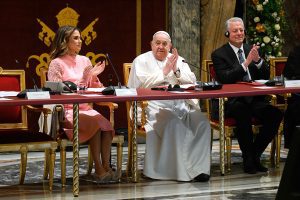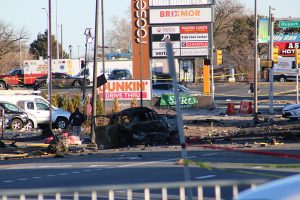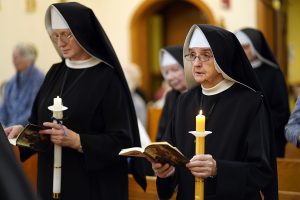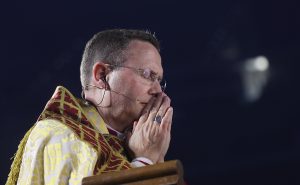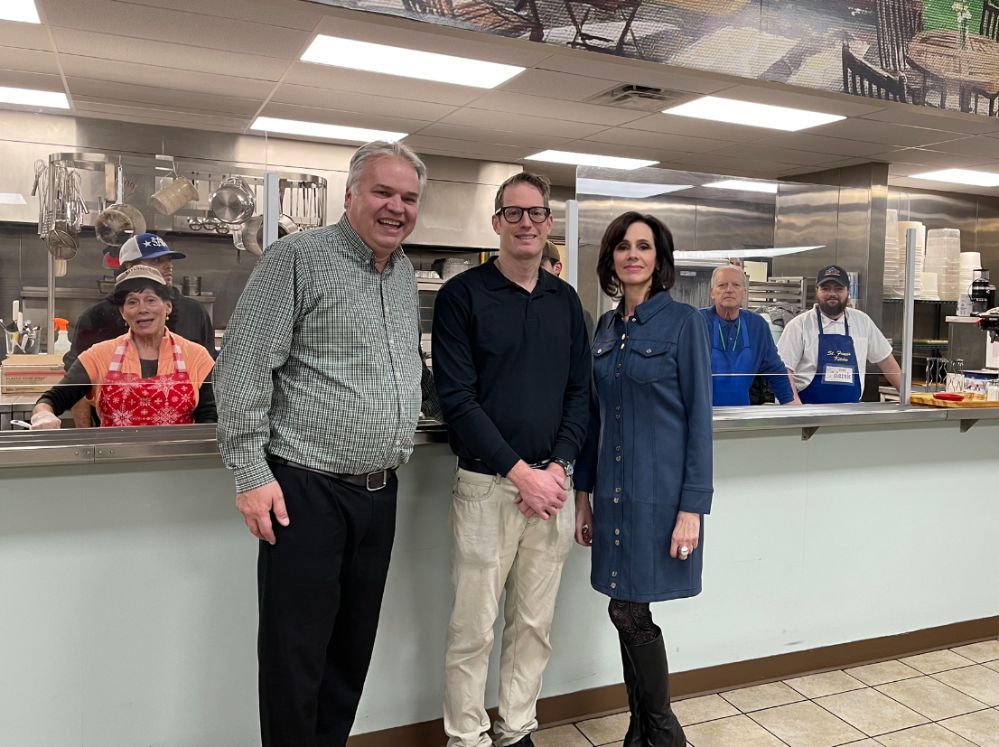(OSV News) – A sea of heart-shaped cards, candy and decor reminds couples that Valentine’s Day is around the corner. But at the same time, many Catholic parishes are preparing to celebrate a related but different memorial to love — World Marriage Day.
The holiday began in Baton Rouge in 1981 when marriage enthusiasts declared Feb. 14 “We Believe in Marriage Day.” The Catholic organization Worldwide Marriage Encounter adopted and spread the celebration, now held on the second Sunday of February. The U.S. Conference of Catholic Bishops picked “Marriage: Source of Hope, Spring of Renewal. Pursue a Lasting Love!” as the theme for this year’s World Marriage Day, Feb. 9 and National Marriage Week, Feb. 7-14.
In College Station, Texas, St. Thomas Aquinas Parish is celebrating World Marriage Day with a blessing over all the married couples at the Feb. 8 vigil Mass followed by a parish dinner dance. This year’s dance has a Polish wedding theme, complete with kielbasa, sauerkraut, a traditional cookie table and polka dancing. Each table will have bread and salt, a Polish wedding custom symbolizing the saltiness of life and a prayer for continued sustenance.
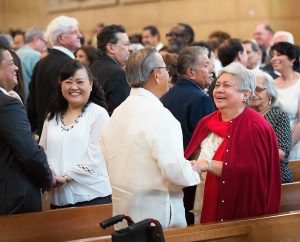
The whole parish pitches in to make the event a success, said St. Thomas Aquinas’ pastor, Father Albert Laforet Jr.
“We try to make it very family friendly and inexpensive so our young families can participate,” he told OSV News.
“We have a group of parishioners called the St. Lawrence Grill team to prepare the food — smoking meat is a great Texas tradition. Another group of parishioners formed a band for the dancing. The American Heritage Girls do the decorations,” he said.
A strong marriage and family culture in the church fosters vocations, said Father Laforet. He shared that St. Thomas Aquinas has several parishioners in formation, including four seminarians and one woman discerning religious life.
“We encourage our families to promote all the vocations in their family life,” he said.
As World Marriage Day coordinators for Worldwide Marriage Encounter, Tom and Julie Gennaro are promoting the holiday by sharing ways parishes can mark the occasion.
“It can be as simple as asking your priest to pray over married couples to handing out Hershey’s Kisses as people leave the parish,” said Julie Gennaro.
Other ideas include running a bulletin announcement celebrating marriage, posting a video message with testimonies from married couples, celebrating a liturgy honoring marriage or hosting a marriage enrichment event.
“Our marriages are an outward sign of God’s grace to us and it’s incumbent on us to celebrate our marriage and celebrate the sacrament of marriage,” said Tom Gennaro.
Worldwide Marriage Encounter also promotes marriage throughout the year with its annual Longest Married Couple Project, an initiative to find and honor longtime married couples across the country. Recent winners include Charles and Goldia Sasse from Fairbury, Illinois, who had been married 79 years.
“We personally love recognizing couples that inspire us in our community … and letting them know we think their longevity has been an inspiration to us as a married couple,” said Julie Gennaro.
Thirteen years ago, Louisiana Catholic couple Ryan and Mary-Rose Verret, co-authors of “The Road to Family Missionary Discipleship: Forming Marriages and Families to Share the Joy of the Gospel,” wanted to help marriages by connecting couples more meaningfully to their church community. So they founded the Witness to Love marriage ministry.
Their marriage formation program is modeled on the catechumenate and has engaged couples also pick their mentor couple (using specific criteria) that they know and respect. The mentor couple commits to walk alongside the engaged couple throughout their entire marriage.
“We were trying to do a two-for-one evangelization effort, and by allowing the church community to get involved in marriage preparation, it just changed the whole parish,” Mary-Rose Verret told OSV News.
The Witness to Love program is now in 85 dioceses and has been used by thousands of couples and their mentors.
Much like when seminarians give their testimony at the end of Mass, Ryan and Mary-Rose Verret hope married couples can take to the pulpit to share their story on World Marriage Day.
During this Jubilee Year, which Pope Franics has given the theme “Pilgrims of Hope,” the Verrets are also encouraging parishes to reach out to civilly married couples.
One small parish in a remote part of Texas launched Witness to Love’s Civil Marriage Initiative and had 20 couples and their mentors have their marriages convalidated on the same day, said Mary-Rose Verret.
“Exactly a year later they had another 20 couples,” she said. “They just decided they were going to make this a priority — they’re being evangelical, they’re being missionaries. It’s really beautiful.”
On their social media, Witness to Love will be sharing a novena for the sacrament of matrimony. Each day of the nine-day prayer will have a patron saint couple and special intentions including for widows and widowers, couples experiencing infertility and couples in challenging marriages.
“Married life can be difficult, especially in today’s culture (so) we’re just trying to wrap every married couple in a prayerful hug with this novena,” said Mary-Rose. “You can never pray enough for marriage.”

